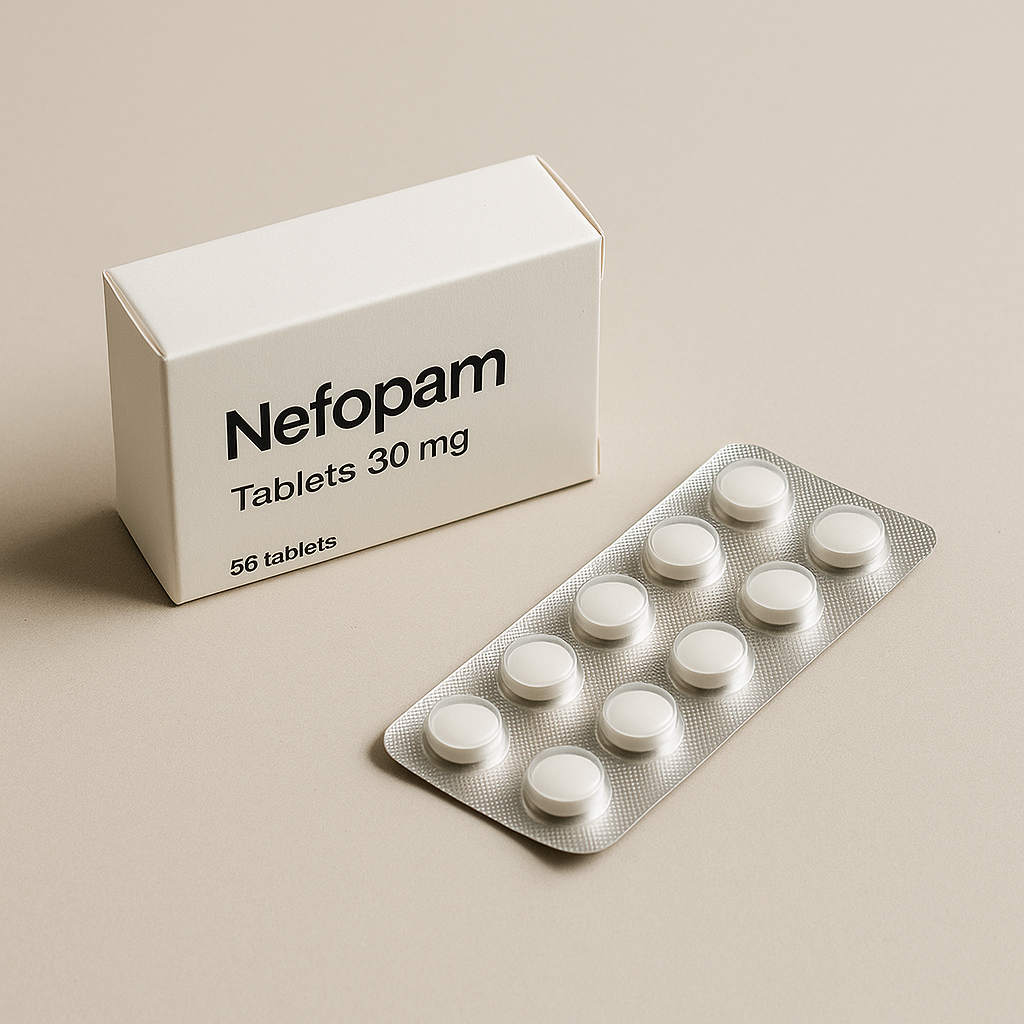Nefopam and Weight Loss: Facts, Not Hype
What Nefopam Is
Nefopam is a prescription-only painkiller used in the UK for moderate pain when simple options are not enough. It is not an opioid. Usual adult dosing is 30–60mg three times daily, adjusted by a clinician. It can make some people drowsy, shaky or dizzy, and long-term use can lead to dependence, so you’re advised to use the lowest dose for the shortest time.
Mechanistically, nefopam works in the central nervous system. Evidence points to inhibition of serotonin and noradrenaline reuptake, with additional effects on glutamate/NMDA pathways. In plain English: it modifies how pain signals are processed rather than numbing the body.
Here is the key point up front: nefopam is not licensed or recommended for weight loss. Any change on the scales should be treated as a side effect or a coincidence, not a goal.

Where “Weight Loss” Claims Come from
You may see snippets from laboratory studies suggesting weight shifts around nefopam. One rat study reported that animals given intraperitoneal (IP) nefopam showed a downward trend in body weight, whereas oral nefopam only blunted weight gain for a couple of days. The authors themselves flagged confounders: bitterness affecting intake, stress or pain from IP injections, and possible metabolic effects. Put bluntly, a rat losing weight after a bitter drug or an uncomfortable injection tells you little about whether humans will lose fat on tablets.
In animal pain models, body weight is sometimes used as a crude proxy for wellbeing. But when the drug tastes bad or the route hurts, weight change stops being a clean signal of analgesia and starts being a side effect of aversion. That’s why extrapolating “nefopam causes weight loss” from that setting is shaky at best. Honestly, it’s a stretch.
What Human Evidence Shows
In people, nefopam is prescribed for pain – postoperative, dental, musculoskeletal and similar – when a clinician judges it appropriate. Trials and reviews focus on pain scores and opioid-sparing effects, not on body weight. National resources do not list weight loss as a therapeutic benefit. Some local UK formulary statements even question how useful nefopam is compared with alternatives and highlight frequent side effects. None of these sources position nefopam as a weight-management tool.
If you notice weight change while taking nefopam, the simple explanation is usually indirect: eating less because you feel nauseous, moving less (or more) due to pain, recovering from surgery, or changes in fluid balance. The NHS lists common effects such as nausea, dizziness, confusion, dry mouth and difficulty peeing – again, nothing about intended weight reduction.
Side Effects That Might Affect Appetite
Nefopam’s side-effect profile can clip appetite or make meals unappealing. That can show up on the scale, but it’s not healthy weight management.
Commonly reported problems include:
- Feeling sick, dizzy or shaky.
- Dry mouth and tingling.
- Confusion or hallucinations in some, especially older adults.
Signals that need urgent attention:
- Fast heartbeat, seizures, severe confusion, or signs of a serious allergic reaction.
- Any new neurological symptoms. Do not self-treat these – seek medical care.
Interactions, Contraindications and Cautions
Nefopam interacts with other medicines that affect the nervous system. It can raise heart rate and may worsen glaucoma or urinary retention. National summaries and local prescribing statements warn of hallucinations, agitation and, rarely, convulsions – risks that climb with misuse or higher anticholinergic burden. If you have epilepsy, angle-closure glaucoma, urinary retention, or you take monoamine oxidase inhibitors, you should not take nefopam without specialist advice.
It’s also “possibly” addictive with long-term use. The NHS advises tapering rather than an abrupt stop if you’ve been on it for a while. Honestly, that’s good practice for many CNS-active drugs.
Could Nefopam Ever Be a Weight-Loss Aid?
Short answer: no. There’s no clinical guidance or licensing for weight reduction, and any weight change seen with nefopam is an unwanted effect. Using a painkiller to chase a smaller number on the scale is unsafe and, in my view, irresponsible. If you’re losing weight unintentionally while on nefopam, speak to your clinician to rule out side effects, under-eating due to nausea, or another cause.
Better, Safer Ways to Approach Weight
If pain is stopping you from moving and you’re also trying to manage weight, address both – in that order.
Talk to your clinician about:
- Switching to pain strategies with clearer benefit–risk profiles for your condition.
- Non-drug options: graded activity, physio, sleep support.
- Antiemetics or dose adjustments if nausea is the barrier.
Build a simple plan you can keep:
- Track steps or active minutes; nudge them up weekly.
- Keep protein steady at meals; choose vegetables you’ll actually eat.
- Aim for a modest calorie deficit you can live with for months, not days.
No drama, no silver bullets. Your body is not a chemistry set to be “hacked” with a painkiller.

The Takeaway – Clear and Blunt
Nefopam is a centrally acting analgesic. It can help selected patients with pain. It is not a weight-loss drug. Animal data showing weight change are confounded by bitterness and injection-related stress, and they do not translate to a safe or meaningful slimming effect in humans. If you’re tempted to use side effects as a weight plan, don’t. Fix the pain, tidy the diet, move a little more, and use medicines for what they are licensed to do.
